I did find that jatra in the end. Thanks to someone I know who is very familiar with the area and replied to my last minute message: “The royal Kumari visits Itumbahaa, and you can get to see her up close. The crowds are not that big either. But there is no exact timing…”
Then he did one better, and told me things would begin four the following afternoon, when I headed to Itumbahā/Itumbahaa/Itum Bahal—there are several transliterated spellings—a Buddhist monastery not far from Kathmandu Durbar Square (and also the surrounding area it’s given its name to).
Things were very low-key when I arrived, well before four. I wanted to make sure I got a good view of the goings-on, but it was indeed not crowded at all, even later.
People were finishing up tea and bread, and in the courtyard, cleanup was in progress. Women from the guthi in matching red polk-dot saris; a man sweeping, another adjusting a banner. I chose one of a line of plastic chairs off to the left, and asked if I could sit. I was told yes, and while a few people spoke to me briefly, everyone was understandably busy. I alternated between watching what was going on and filling in my crossword; I came prepared to wait but mostly my pen scribbled what I was seeing instead of answers.
Then it really began to pour. Like the sort of rain where if you hadn’t already left your house you wouldn’t venture out in that, jatra or no jatra. Half of the courtyard is covered by a tarp, and buckets and pots materialize under its corners to catch the bounty. Also protected under the tarp, a panel edges around the left wall, the images telling the story of the founding of the monastery, I am told. A man on a motorbike arrives with a huge diya; they can be as simple as a clay oil lamp but this one is large and ornate, probably brass, with semi-precious stones.
The floor is swept again, the rain useful in cleaning it though it soon becomes too much and the sweeping becomes about keeping the deluge moving on its way towards to the drains. The sign announcing the special day is moved, and everyone waits. An hour passes. Then more. No one is bothered.
Finally the rain lets up a bit and the small raised dais at the front is covered in red, chairs set in orderly rows and around edges, and the ceremony begins. Pretty much everything is in Newari, which I don’t understand, and it seems a time to just sit and let what’s happening around me happen, even though I don’t follow it all. But there is chanting, and prayers, and then little booklets are passed out to the worhippers—they look a little like a school copy notebook—and everyone begins reading.
I am fascinated by the concept of a book that comes out once a year. Can you read it more often if you want to? I wonder. Though I’m told that might be possible, the question seems puzzling: today is the day to read it. What is about? is my other question. “The theory of emptiness,” is one man’s succinct reply.
Attendees are both reverent and clearly very much enjoying the reading. Once the individuals or groups have finished, they return their booklet to the front and receive a yellow paper covered in plastic in return, a morning prayer, they tell me.
Bands burst in and out throughout, circling the holy place, cheerfully treating us to cymbals and drums—many of the latter carefully and cleverly plastic wrapped because even though the rain has slowed and occasionally stopped, it still lurks.
Inside, later, I see the single page of the book on display. It’s in a room off to the right which can be entered or viewed through a carved wooden screen and for a few rupees (the offering amount is optional), the cloth is lifted to show a beautiful sheet of writing, gold on blue. The rest of the book is wrapped up and displayed at the far end of the room; there are 400 pages and it is 800 years old, they tell me. I think excerpts of this is what’s being read today, but I’m not sure. There are also statues of the Buddha and the monastery’s founder. All of this is on display for fourteen days, today being the last of them.
The Kumari arrives, carried from her home in the Basantapur temple by a rotating entourage and accompanied by a small crowd. She is incredibly self-possessed and I guess it’s not surprising that it’s impossible to read anything on her face, what she thinks of all of this.
Shortly after I first arrived in Nepal, I had a split-second glimpse of the then-Kumari at her temple window; this is the first time since and the first time up close and for any length of time. I honestly don’t feel qualified to go into details about the Living Goddess so I’m not going to try, but plenty has been written about it should you be interested.
The group circles the central shrine inside the monastery, past the holy book and statues, and, after a changeover of carriers, she is carried out of the monastery again, on to the next holy place; they tell me she will visit four or five locations today.
The anticipating that was building passes; the ceremony continues. The crowd who came in with her follow her out.
Time passes and I’ve also visited, to my great delight, the kitchen, where two women are washing large fresh lotus leaves which the special occasion warrants instead of the usual dried sal leaf plates. They are pulling them out of large sacks and washing each one carefully.
A large brass or copper pot—the biggest I’ve seen in use—is bubbling over a wood fire. It’s the dal, I’m told, though I later learn it contains vegetables too—84 ingredients to be precise, all vegetarian, no onions or garlic. There’s a bowl of large chili peppers that have been seared, a bowl of soybeans and a bowl of lapsi.
Oh, and a gas burner topped with a huge aluminum pot of rice: twenty kilos of it, also at a vigorous boil, tended to by a man with a wooden paddle the size of an oar. It’s fascinating.
The ceremony begins to wind down as people finish their booklets. More bands pass through, as do people who have come to pay their respects to the deities, see the holy relics, touch the grain in the central shrine.
It feels like time to leave and I start to move towards to entrance, only to be stopped by one of the first women I met when I arrived, hours ago now. “You will stay and eat with us,” she says, pleasantly but very firmly. It is not a question and of course I’m more than happy to comply.
On serving tables are the things I saw earlier and several achhars I hadn’t, and eventually I end up at the back of the line with someone whose acquaintance I just made ten or so minutes ago. There are 360 households associated with this vihar, he tells me, though not all are here today.
Thankfully stainless steel plates are provided as a base for the lotus leaves, because I’m not the tidiest at eating with my hands on a regular plate, much less on a fresh leaf.
The food is simple and tasty, and there is one stand-out achar, a ground yellow-brown paste with a flavour I can’t place but which is simply mind-blowing. I pass on the refills of rice and go back for more of that, along with the tasty vegetable-lentil mix. There’s snake gourd in it, I think. Some tasty gourd.
Finally it really is time to go.
I know someone who visits as many different Newari jatras as he can and while I respect his commitment I wonder if what I’d like better is to pick a few and go to those, year after year. Where you’d understand a little more each time. And recognized faces and remembered names and weren’t a stranger.
***
Note: It goes without saying that I am no expert; this is from what I saw and heard and took notes on; any inaccuracies are on me. For more details about Itumbaha in general and this event in particular, you can find more details on this page, in the section “Gun-la festivals” under “Yearly festivals of Itumbaha.”
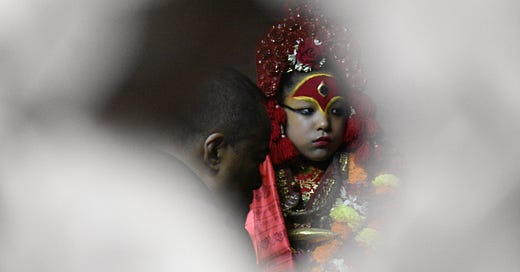



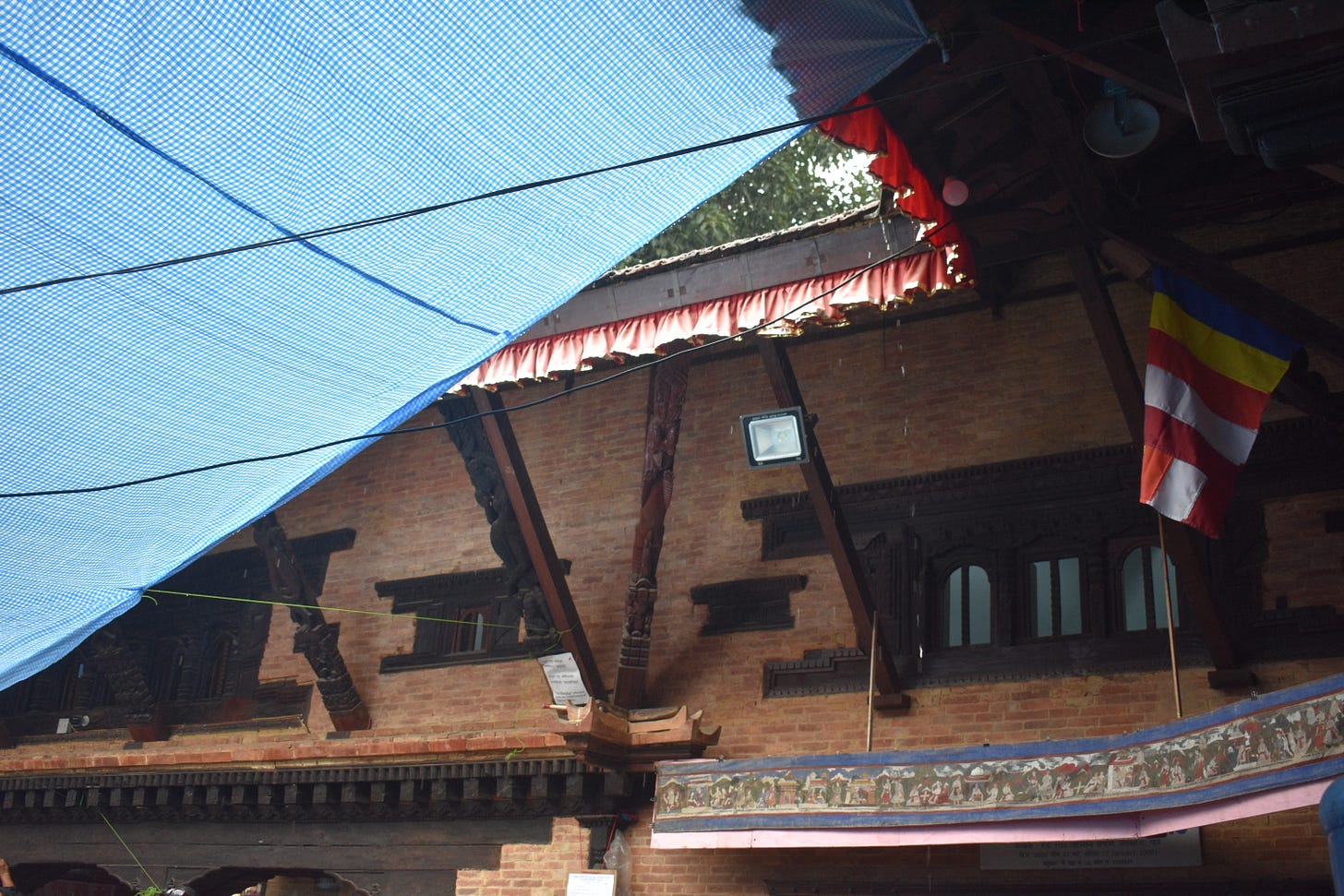
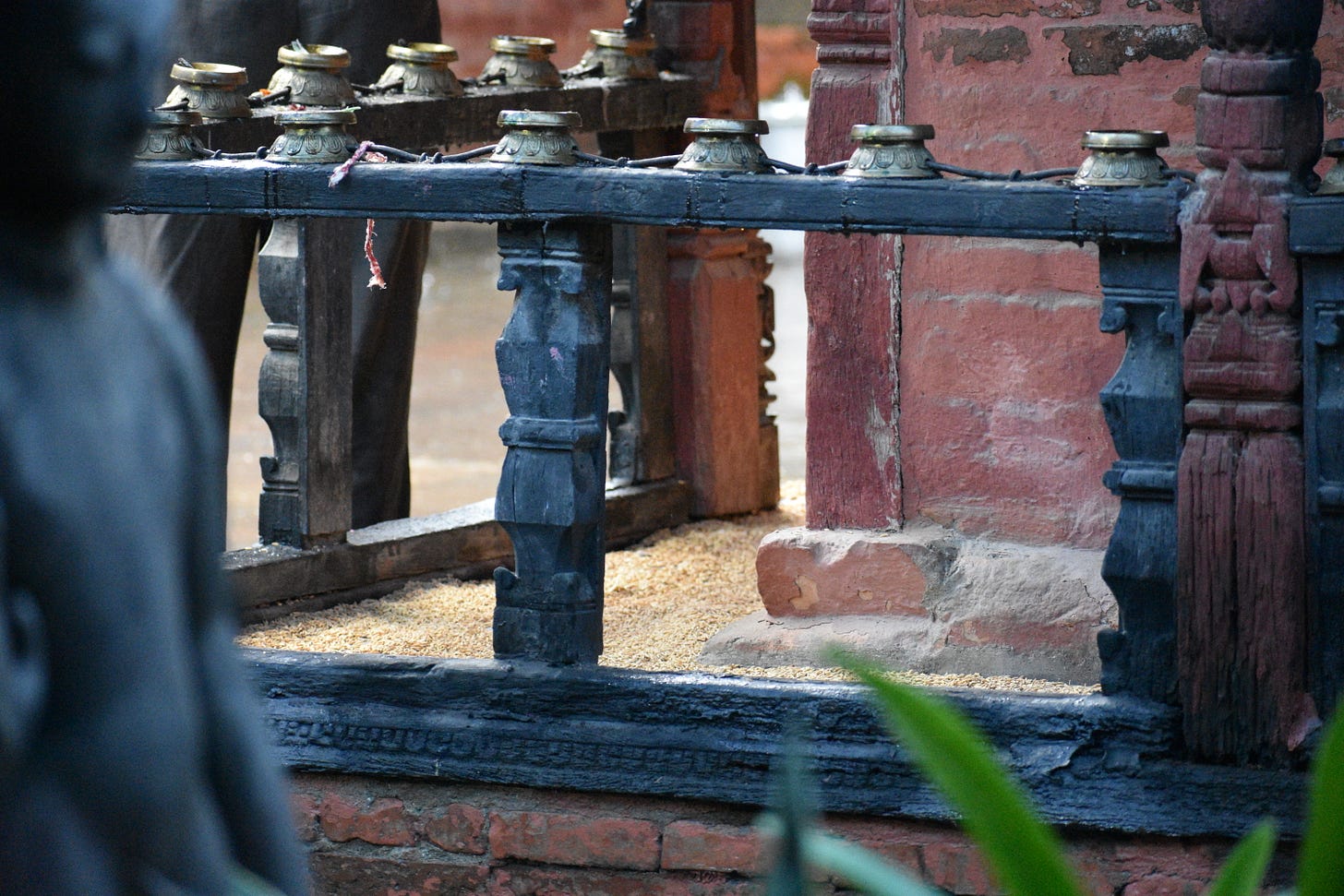
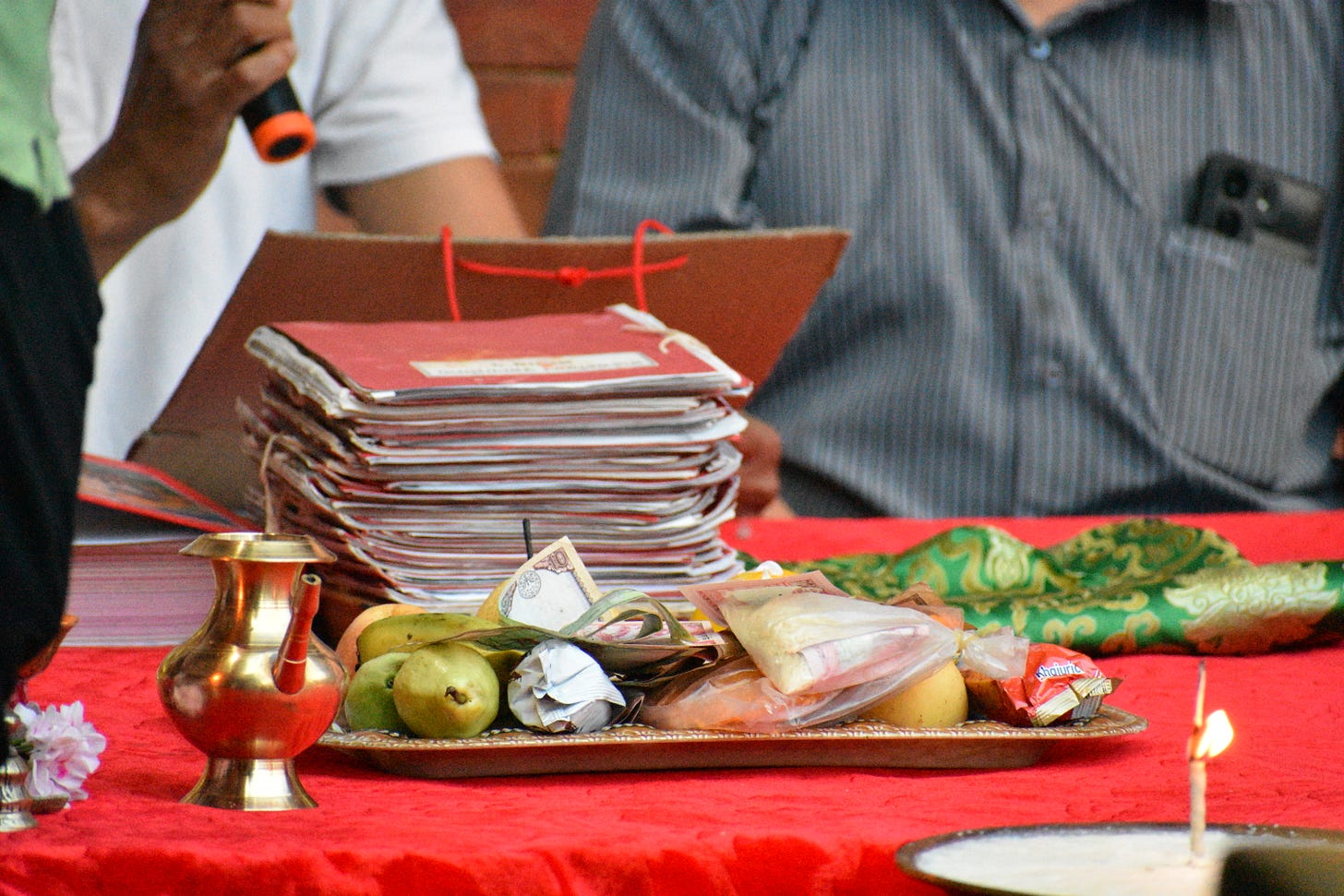
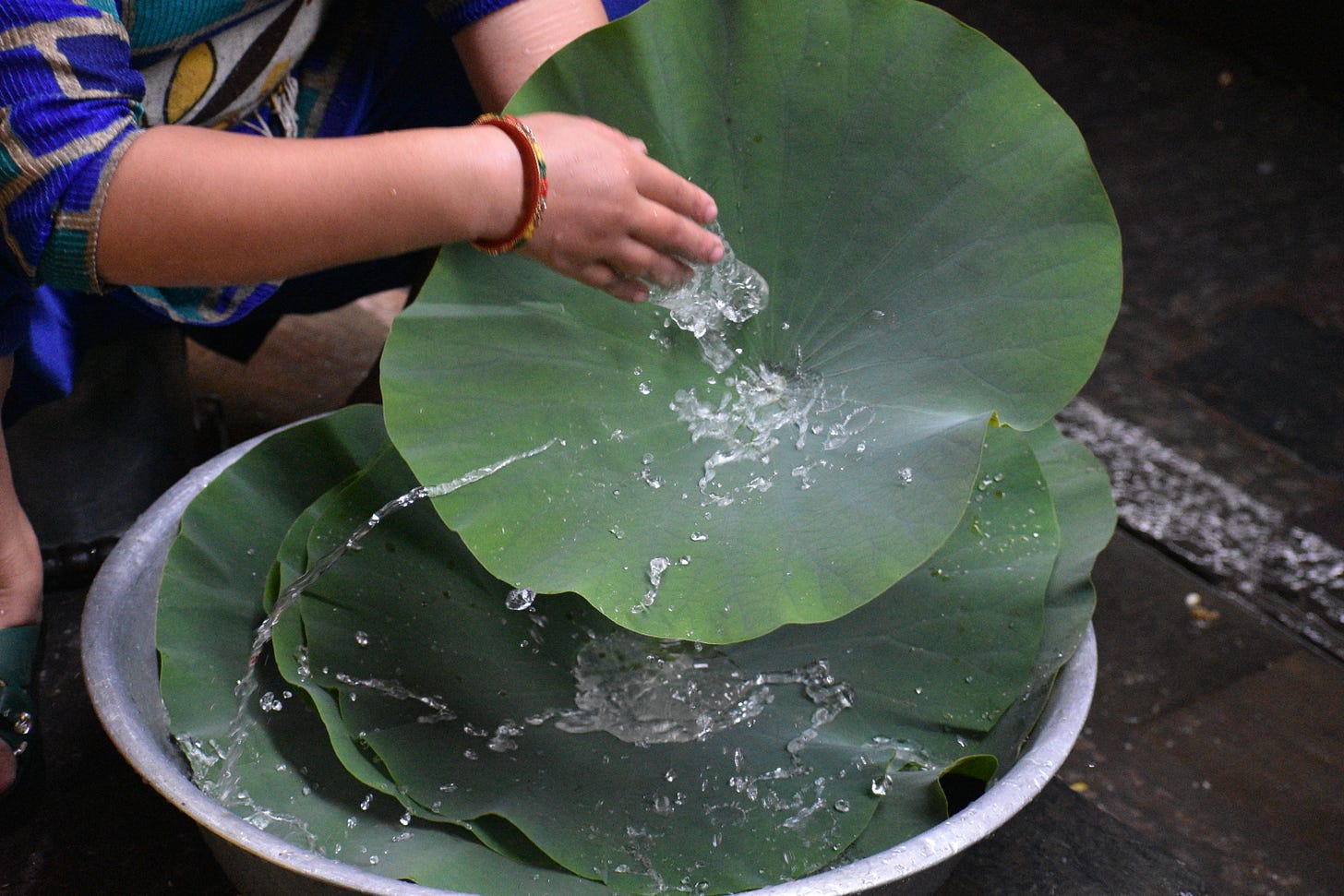
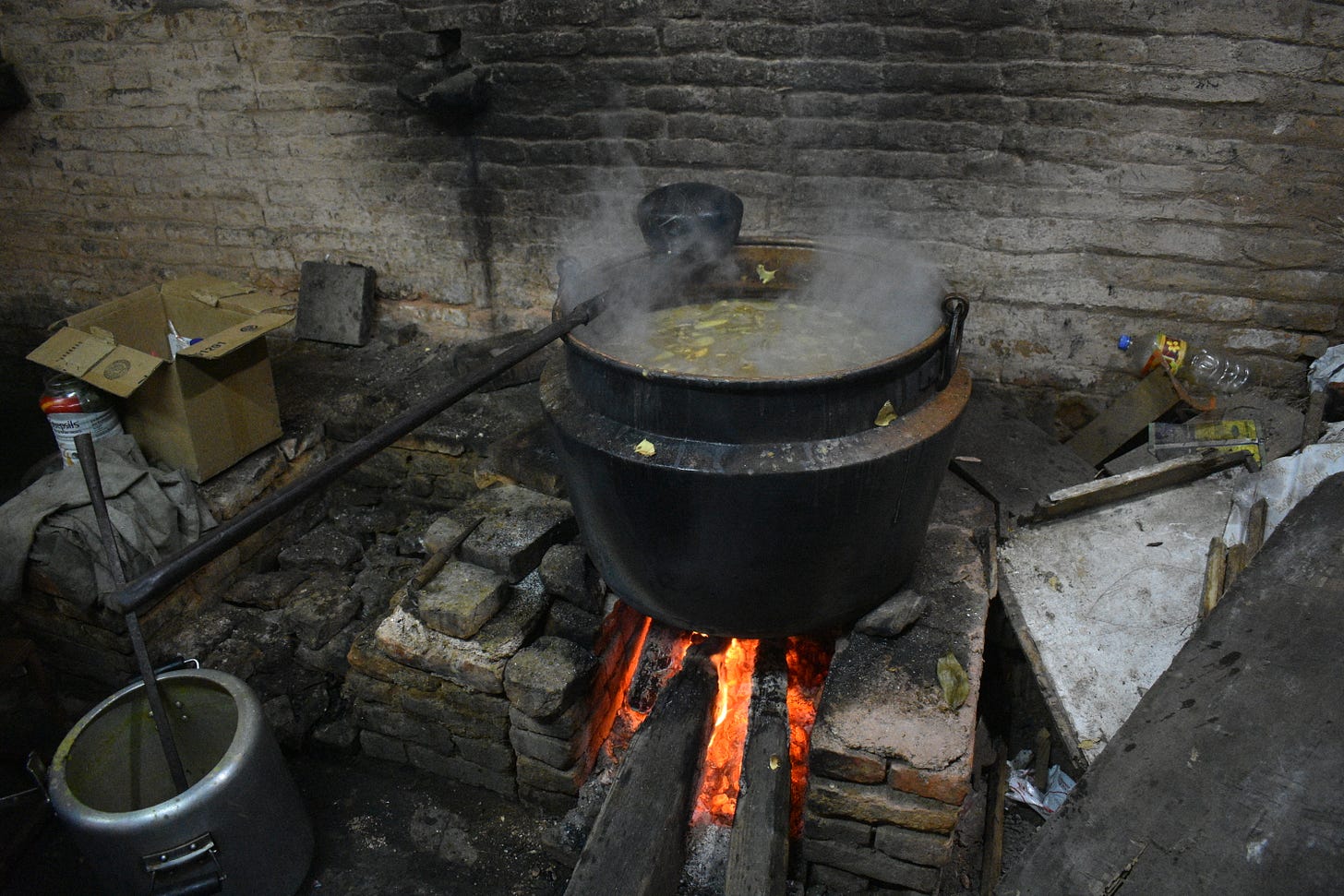
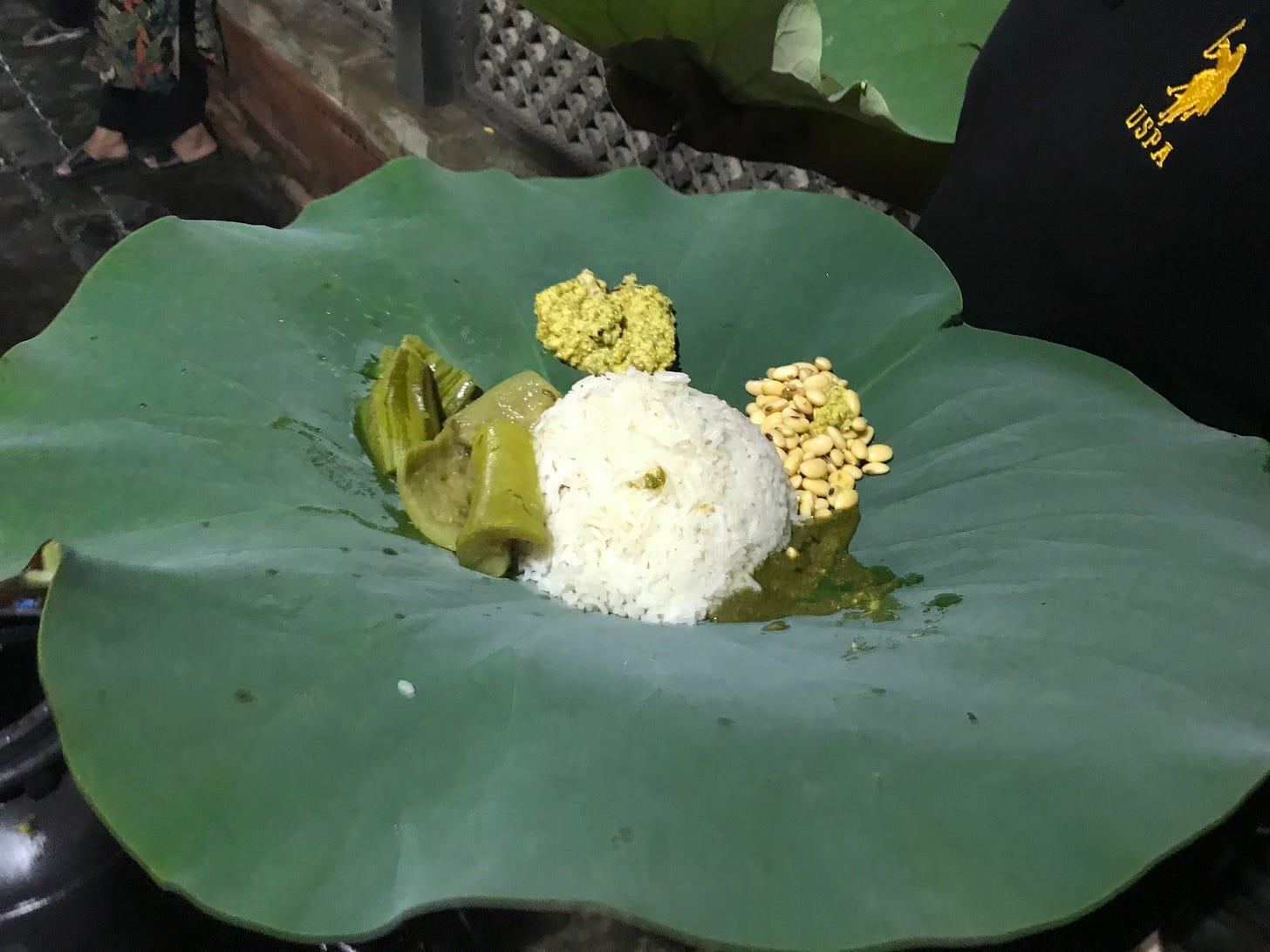
and beautiful pictures 🧡
the theory of emptiness.. I wish I had explored more of that side of the valley when I was there!